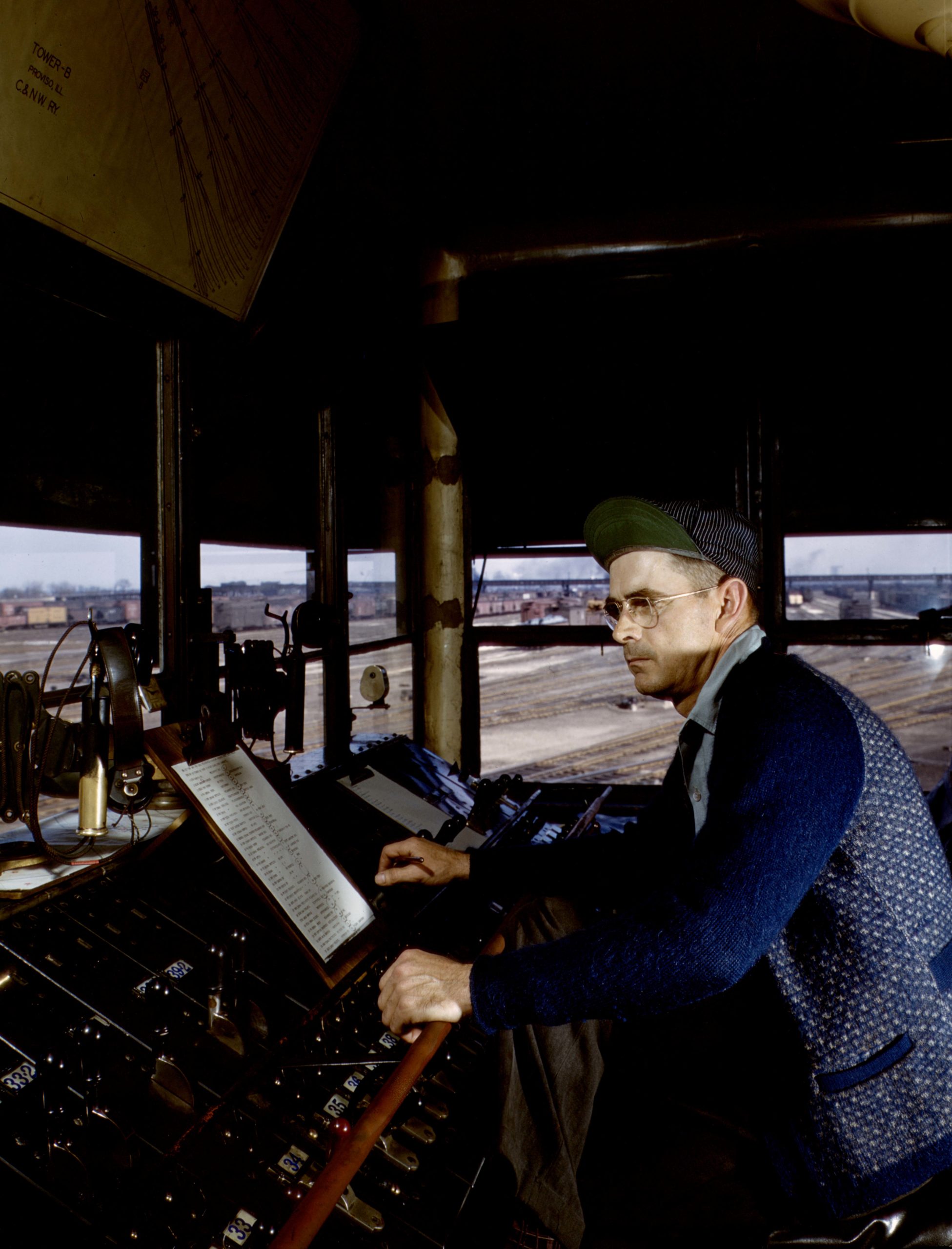Tuesday, December 7, 2021
7:00 p.m. (U.S. Central Time), on Zoom
Registration closes on Monday, December 6 at 4:30 p.m. (CDT)
In a program centered around the late 1940s through the early 1960s, we take a tour of the Milwaukee area as famed Trains Magazine Editor David P. Morgan might have experienced it, from the early days of his career as a junior staff member to his prime years as editor-in-chief. We’ll start at Morgan’s place of employment — the celebrated Kalmbach building at 1027 N. Seventh Street — and work our way around town, witnessing freight and passenger action on the Milwaukee Road, the North Shore Line, the Chicago & North Western, as well as some operations of the Milwaukee Electric.
The presentation will include images from a number of iconic Milwaukee photographers of the era, including Wallace W. Abbey, Jim Scribbins, and W.A. Akin, Jr., as well as some often bittersweet before-and-after comparisons. It’s easy to see why Morgan, a Southerner by birth, fell in love with the city where he spent most of his life.
Kevin Keefe recently retired as vice-president-editorial for Kalmbach Publishing Co. and is a board member of the CRP&A. He served as editor of Trains from 1992 to 2000. As a student at Michigan State, he worked on Pere Marquette steam locomotive no. 1225, and he later authored a book about it.
This event is free.
 One of Milwaukee Road’s Fairbanks-Morse switchers works the Beer Line branch beneath the Holton Street bridge. Wallace W. Abbey, The Center for Railroad Photography & Art, Abbey-01-148-10.
One of Milwaukee Road’s Fairbanks-Morse switchers works the Beer Line branch beneath the Holton Street bridge. Wallace W. Abbey, The Center for Railroad Photography & Art, Abbey-01-148-10.
 Eat Steel & Spit Rivets: Norfolk Southern Employees Reflect on 30 Years of Change, Challenge, and Achievement Author (s): Norfolk Southern Employees Publisher: Norfolk Southern Corporate Communications Department Paperback Original price $17, now $10
Eat Steel & Spit Rivets: Norfolk Southern Employees Reflect on 30 Years of Change, Challenge, and Achievement Author (s): Norfolk Southern Employees Publisher: Norfolk Southern Corporate Communications Department Paperback Original price $17, now $10 The WJNP (White River Junction to Newport, Vermont) of the Vermont Rail Systems at Norwich, Vermont seen by drone in April 2021. Photograph by Jennifer Al-Beik.
The WJNP (White River Junction to Newport, Vermont) of the Vermont Rail Systems at Norwich, Vermont seen by drone in April 2021. Photograph by Jennifer Al-Beik. Predawn Pikes Peak State Park, Iowa 2017. Photograph by Todd Halamka.
Predawn Pikes Peak State Park, Iowa 2017. Photograph by Todd Halamka.
 Chicago & North Western Railroad towerman R.W. Mayberry of Elmhurst, Ill., at the Proviso yard in May 1943. He operates a set of retarders and switches at the hump, Melrose Park (near Chicago), Ill. Jack Delano, 1914-1997, LC-USW36-588
Chicago & North Western Railroad towerman R.W. Mayberry of Elmhurst, Ill., at the Proviso yard in May 1943. He operates a set of retarders and switches at the hump, Melrose Park (near Chicago), Ill. Jack Delano, 1914-1997, LC-USW36-588